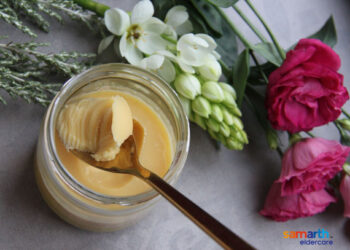Indians have always been symbiotic with nature and perhaps this is why ancient medical science like Ayurveda thrived over here. A whole lot of traditional remedies based on various parts of the plants like bark, root, stem, leaves, flowers and fruits are commonplace in our country. Our ancestors clearly had the wisdom to understand what was edible and what was not, and used these resources wisely.
A famous anecdote that most of us can relate with is the journey of Lord Hanuman in Ramayana to get the Sanjeevani herb to revive the unconscious Lakshmana in the battlefield. This wisdom has been passed on from generations and even today many Indian households rely on traditional homemade remedies for curing common maladies. Equally, Indians also include the various health and immune-boosting plants in their diet. Again, the parts of the plant may include roots, leaves, stems, or flowers.
Many of us are aware of the edible nature of the vegetable or fruit, flowers, like Moringa (drumstick), pumpkin, banana, papaya, etc. But, there are many other flowers that are used for decoration purpose, that are also edible. They also have some exceptional health benefits as well. A few of these like the hibiscus and rose are at least known to many people. But there are a few more that are edible as well.

Join Now >
Marigold
The bright orange marigold blooms are a pleasant sight for most people. These are used as decoration flowers in temples, occasions, flower carpets for festivals like Onam and Diwali. Wherever they are used, they brighten up space and decor, and also there is a gentle fragrance in the air. The best part is that these flowers are easy to grow in your homes, even in a limited space like a balcony also.
But, did you know that these bright blooms also had some medicinal uses? These flowers are said to be good for skin issues as they reduce inflammation, redness, and dryness. Marigold oil, when applied on the skin, can even protect from the damage due to UV rays of the sun. The flavonoids present in marigold are said to have anti-cancer properties and they also help detoxify the body. These flowers are also natural insect repellents and are used in oils and candles for this purpose.
Jasmine
Jasmine flowers have always been associated with beauty, love, seduction, etc. due to its distinct and strong fragrance. In a garden, if a jasmine flower blooms, you would know just by the pleasant smell in the air. But they are equally healthy as well. While jasmine garlands, decoration and perfumes are more common, its medicinal properties are not so well known. They are used in cooking and added while preparing tea, or certain baking dishes.
Jasmine has relaxing properties due to which it is said to help with insomnia, and can even be kept in the bedroom. Jasmine tea is said to reduce blood pressure, strengthen our immunity and also aid in weight loss. Besides, it also controls cholesterol levels in the body, and what’s more, even works as an energy booster and mood enhancer.
Lotus
The national flower of India is not just a wonderful water bloom that is associated with the gods in our mythology. It is also an edible flower that has medicinal uses, and its seeds called the makhana are commonly consumed in many North Indian households. The root of the Lotus is used in cooking many dishes in many parts of the country. Lotus in tea can help with cardiac issues, while the seeds are said to be beneficial for the kidneys and spleen. It’s rich in potassium and fibre, and can also help with issues like insomnia and restlessness. It boosts our digestion, regulates blood pressure, and is also good for skin and hair.
Chrysanthemums
Another commonly used decorative flower is the Chrysanthemum, which usually comes in a bright yellow colour. This flower has some amazing medicinal qualities and helps with blood pressure regulation and certain heart issues. Chrysanthemum tea is common in China, and it has been used medicinally for centuries in traditional Chinese medicine. It can treat respiratory issues, high blood pressure, and hyperthyroidism. It can also help reduce fever and cold and helps relax a person. It is a good remedy for osteoporosis and can provide cold energy to bring down the heat and inflammation as well.
Note: All these flowers need to be identified as edible varieties and grown at home or procured from such reliable sources before they can be consumed. Those available in the market will be laced with pesticide and can be harmful and not meant for consumption purposes. Also, some people are allergic to certain flowers, and hence, caution is advised.











